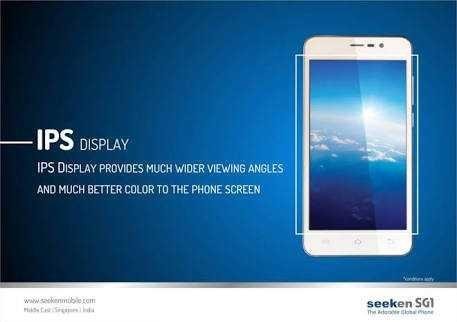One of the numerous decisions you have when purchasing another cell phone is show compose. There are two noteworthy advancements available, AMOLED (or Super AMOLED) and IPS LCD, and both have their focal points and inconveniences. Here we'll clarify precisely what you have to think about them without going too far into the mind boggling details of each approach.

HTC One M9: IPS LCD innovation
Nexus 6: AMOLED innovation
Samsung Galaxy S6: Super AMOLED innovation
Immediately it merits calling attention to that all the significant producers put a couple of restrictive advancements over the establishments laid by AMOLED or IPS LCD – innovations typically given a confounding custom name – and that is the reason two AMOLED cell phones may not coordinate as far as profundity and quality regardless of whether they're of a similar sort. At the end of the day the nature of a telephone's show is about more than whether it utilizes AMOLED or IPS LCD.
While we can discuss the contrasts amongst AMOLED and IPS LCD in wide terms, on the off chance that you need to know the standard of the screen on one specific gadget, singular surveys are forever your best port of call. Contrasts between these two advances have changed throughout the years, and will keep on changing as new redesigns show up, so watch out for the most current updates from the significant producers.
**AMOLED **
AMOLED (Active Matrix Organic Light-Emitting Diode) innovation is currently regularly found in its cutting edge Super AMOLED appearance. With these showcases, singular pixels are lit independently (that is the dynamic lattice bit) over a thin film transistor (TFT) cluster that goes power through natural aggravates (that is the OLED bit). It's a more current innovation than IPS LCD and enhances it in a few regions while as yet lingering behind in others.

Nexus 6: AMOLED innovation
Nexus 6: AMOLED technology(Credit: Will Shanklin/Gizmag.com)
At its heart OLED innovation utilizes anodes and cathodes for electron move through a thin film; splendor is controlled by the quality of the electron current. Shading is controlled by the little red, green and blue light-transmitting diodes incorporated with the show. The most ideal method for understanding it is to think about every pixel as its own particular freely hued, scaled down light on the screen.
Hues are ordinarily brighter with AMOLED and Super AMOLED, and blacks are darker on the grounds that bits of the screen can be successfully killed. This additionally prompts a hypothetical change in battery life, however that relies upon precisely how you're utilizing the screen (if every one of the pixels are lit constantly, the reverse can be valid with AMOLED being more eager for power than IPS LCD).
AMOLED customarily experienced "consume in," where pixel quality corrupted after some time, however this is ending up to a lesser extent an issue as the innovation makes strides. Likewise in the negative section, they cost more to create and can seem less sharp when seen at short proximity.
Samsung is Super AMOLED's greatest fan, and you'll frequently discover its telephones being discussed regarding the dynamic quality and striking quality of the hues – that is Super AMOLED at work. The innovation scores exceptionally for perfect looking hues and profound blacks.
The key contrast between Super AMOLED and the standard AMOLED (regularly utilized by any semblance of Motorola) is that the previous coordinates touch sensors in the show itself, evacuating the requirement for an additional layer and frequently taking into account a general more slender gadget.
As a rule Super AMOLED additionally offers better splendor and battery life, however again producers are striving to limit the distinction with their own particular enhancements.
**IPS LCD **
In the other corner of the ring we have IPS LCD, or In-Plane Switching Liquid Crystal Display – as Super AMOLED is an overhaul on plain old AMOLED, so IPS LCD enhances the respected (TFT) LCD innovation. The powerful iPhone utilizes IPS LCD and from the makers' perspective it's less expensive to create, which is a reward.
HTC One M9: IPS LCD innovation

HTC One M9: IPS LCD technology(Credit: Will Shanklin/Gizmag.com)
Basically, LCD utilizes enraptured light which is then go through a shading channel. Flat and vertical channels on either side of the fluid precious stones control the splendor and regardless of whether every pixel is on or off. With the backdrop illumination incorporated, the handsets are generally thicker – however as with a significant number of these focuses advance is being made to settle that (and Apple's most recent iPhones are prominent special cases).
Every one of the pixels are illuminated to some degree while the gadget is on, be that as it may, even the dark ones. This implies difference and darkness can endure (in case you're viewing a motion picture set in profound space, for instance). On the upside, pixels can give the impression of being pressed all the more firmly together, helping sharpness and lucidity (something Apple is exceptionally enthused about). IPS LCD is regularly discussed as offering more common hues; AMOLED screens can now and again look a little finished soaked.
Review points regularly aren't exactly as great on IPS LCD as they are on AMOLED, extensively, and again its the backdrop illumination to fault. Then again whites tend to turn out better – the whites on an AMOLED screen can now and again seem to be marginally yellowy. Picture takers have a tendency to settle on IPS LCD shows as they demonstrate hues all the more precisely.
And also Apple, LG is a major devotee of the IPS LCD approach, as is HTC. These presentations can more often than not perform better as far as their perceivability in splendid daylight regardless of whether they're not exactly as useful for watching motion pictures in an obscured room (as should be obvious, it's an intense bring to pick one over the other).
**Conclusion **
There truly is no victor with regards to AMOLED versus IPS LCD, yet it's as yet accommodating to comprehend what every innovation includes. The nature of a screen essentially boils down to how a producer applies its picked standard, and a great deal of potential issues on the two sides – from battery deplete to washed-out blacks – can be limited with an excellent generation process.
A large number of the issues and inconveniences we've discussed are being managed by Samsung, Apple and the other real players, as every one changes the presentations in their handsets and the innovation lying underneath. Consequently continue perusing the incredibly out to perceive how AMOLED and IPS LCD admission in the years to come.
At last, you should center around the qualities of every innovation while picking – that is splendid hues and profound blacks for AMOLED, and characteristic hues and sharpness for IPS LCD. It is pleasant to have one innovation that does everything superbly, obviously, yet we're not exactly there yet.
Hello,
We have found similar content: https://newatlas.com/amoled-vs-ips-display-technology/39196/
Not indicating that the content you post including translations, spun, or re-written articles are not your original work could be seen as plagiarism.
These are some tips on how to share content and add value:
Repeated plagiarized posts are considered spam. Spam is discouraged by the community, and may result in action from the cheetah bot.
If you are actually the original author, please do reply to let us know!
Thank You.
More Info: Abuse Guide - 2017.
Downvoting a post can decrease pending rewards and make it less visible. Common reasons:
Submit